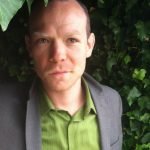Node Smith, ND
A study facilitated by the Center for Injury Research and Policy and the Central Ohio Poison Centre at Nationwide Children’s Hospital saw more than 156,000 phone calls to US Poison Control Centers specific to ingestion of attention-deficit hyperactivity disorder (ADD/ADHD) drugs.1 The calls were all pertinent to individuals 19 years of age or younger. The study cataloged calls from January 2000 through December 2014 – an average of 200 calls per week, or 29 calls per day. The study was published in the journal Pediatrics.
Spike in Poison Control Centers calls coincides with increase in ADD/ADHD diagnoses and medication prescriptions
The study found that despite fluctuations in the number of calls concerning ADD/ADHD medications throughout the years there was an overall increase in prevalence of these specific calls of 61% over the fourteen years of the study. The increase in calls to Poison Control Centers coincides with an increase in ADD/ADHD diagnoses and medication prescriptions written over these years.
Pediatric exposure to ADHD meds an increasing problem in the US, according to senior author
According to Gary Smith, MD, DrPH, senior author of the study, “Pediatric exposures to ADHD medications are an increasing problem in the US, affecting children of all ages.”
Children 12 years of age and younger accounted for the majority of the calls
Children 12 years of age and younger accounted for the majority of the calls – 76%. In the age group under 6 years most accidental exposures were due to exploratory behavior, while in children between the ages of 6 – 12 were more likely to have therapeutic errors. Therapeutic errors typically were noted to be either giving a wrong dose, giving the wrong medicine or giving a dose too soon after previous dose. Teenagers, ages 13-19, were more likely to report intentional misuse, which may also have been suspected suicide attempts. The exposures in this latter age group were seen to have the most severe outcomes.
Co-author, Rick Spiller, explains findings
Co-author, Rick Spiller, director of the Central Ohio Poison Center explains these findings, “In young children, it is exploratory behavior and access to the medication bottle, while in school age children it is usually the busy family schedule and a double-dosing medication error. In adolescents it tends to be an intentional exposure.”
Stats on exposures to these medications
The majority of exposures to these medications (60%) did not result in hospitalization or any medical intervention, and roughly a quarter (25%) were treated on an outpatient basis. Around 6% were admitted for medical treatment and 3 deaths were recorded. Of all the calls, only around 30 percent reported clinical symptoms, the most common being rapid heart rate (10%), agitation/irritability (11%), high blood pressure (3%), and vomiting (2%). Two drugs accounted for over 45% of calls: methylphenidate and amphetamine.
Source:
- King SA, Casavant MJ, Spiller HA, et al. Pediatric ADHD Medication Exposures Reported to US Poison Control Centers. Pediatrics, May 2018.
Image Copyright: <a href=’https://www.123rf.com/profile_sifotography’>sifotography / 123RF Stock Photo</a>
 Node Smith, ND, is a naturopathic physician in Portland, OR and associate editor for NDNR. He has been instrumental in maintaining a firm connection to the philosophy and heritage of naturopathic medicine among the next generation of docs. He helped found the first multi-generational experiential retreat, which brings elders, alumni, and students together for a weekend camp-out where naturopathic medicine and medical philosophy are experienced in nature. Four years ago he helped found the non-profit, Association for Naturopathic ReVitalization (ANR), for which he serves as the board chairman. ANR has a mission to inspire health practitioners to embody the naturopathic principles through experiential education. Node also has a firm belief that the next era of naturopathic medicine will see a resurgence of in-patient facilities which use fasting, earthing, hydrotherapy and homeopathy to bring people back from chronic diseases of modern living; he is involved in numerous conversations and projects to bring about this vision.
Node Smith, ND, is a naturopathic physician in Portland, OR and associate editor for NDNR. He has been instrumental in maintaining a firm connection to the philosophy and heritage of naturopathic medicine among the next generation of docs. He helped found the first multi-generational experiential retreat, which brings elders, alumni, and students together for a weekend camp-out where naturopathic medicine and medical philosophy are experienced in nature. Four years ago he helped found the non-profit, Association for Naturopathic ReVitalization (ANR), for which he serves as the board chairman. ANR has a mission to inspire health practitioners to embody the naturopathic principles through experiential education. Node also has a firm belief that the next era of naturopathic medicine will see a resurgence of in-patient facilities which use fasting, earthing, hydrotherapy and homeopathy to bring people back from chronic diseases of modern living; he is involved in numerous conversations and projects to bring about this vision.




